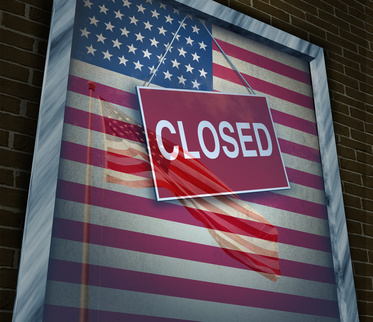With the deadline for Congress to pass a federal budget rapidly approaching (April 28th), you may be hearing a lot of talk about a so-called government shutdown in the news. But what exactly does it mean and why does it happen?
Well the legislative branch has what’s called the “power of the purse”—or in other words control of the money. So if Congress can’t agree on a budget proposal or the President uses his veto power, the federal government essentially runs out of funds—which has happened twelve times since 1980.
Yet, there are ways to avoid such an outcome without passing a comprehensive budget. Congress and the President can agree on a partial spending bill that funds the federal government for a short period of time while lawmakers attempt to push a comprehensive plan through. But if neither of these endeavors are successful the federal government shuts down.
The most beneficial outcome for the American people would obviously be for the government to continue functioning—but the term “government shut” makes the situation seem more dire than what it actually is. Yes, you won’t be able to visit the National Zoo or Yellowstone, but the mail will still be delivered and other vital government operations will be completed.
In fact, less than a third of the federal positions will be empty during a shutdown. During the previous 2013 budget gap, only 850,000 out of the total 2.8 million federal employees were furloughed over the 15 day period—a disturbance to be sure, but not debilitating.
For the American people’s sake, let’s hope Speaker Ryan and his party can crank out some sort of spending bill before Friday, but if they don’t, it won’t be ruinous. Yes, there may be some inconvenience and gridlock in Congress, but more-or-less everything will continue to operate as usual—that is as long as it doesn’t go on for too long.



